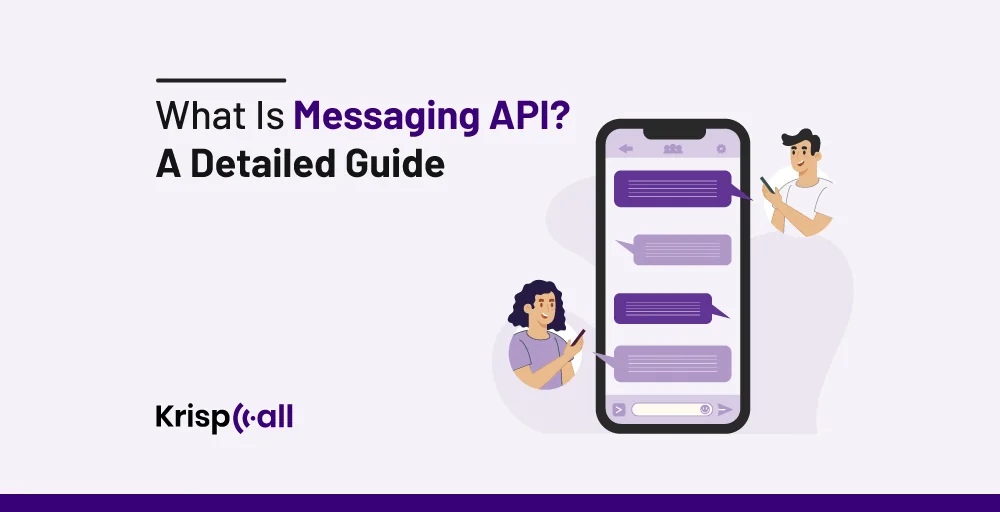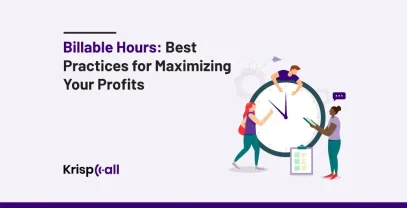Is text messaging the most used mode of communication in your business to engage with prospects and customers? Are you struggling to manage multiple text messaging tools for customer communication?
Messaging APIs offer a powerful solution for businesses like yours. Messaging APIs can revolutionize how you connect with your audience by streamlining communication, automating interactions, and enhancing customer experience.
So, what is messaging API, and how exactly does it work for a business? We have covered everything for you. Just keep reading.
🔑 KEY HIGHLIGHTS
- Messaging API is a set of tools and protocols that allow developers to integrate messaging functionality into their applications or systems.
- It offers businesses a direct channel to engage with customers, streamline communication workflows, and improve the customer experience.
- Two types of messaging API are SMS and MMS.
- The Messaging API feature helps businesses chat with customers in real-time, send bulk SMS, share updates, and send various notifications.
What is messaging API?
Messaging API is a set of tools and protocols that allow developers to integrate messaging functionality into their applications or systems. It allows a business to send, receive, and track messages from customers in real-time through its own platform to the customer’s mobile network.

In messaging API, the Application Programming Interface (API) works as a bridge that enables different applications to communicate with each other and allows the application to access specific features or data from a service or platform as well.
Messaging APIs are commonly used in various applications and platforms, including social media applications, customer support systems, collaboration tools, etc.
How do messaging APIs work?
Messaging APIs work by acting as a bridge between business applications and mobile networks. To set up messaging APIs in the business, the business needs to integrate APIs in its messaging application. These messaging APIs are mainly offered by a third-party provider with access to various and specific data.
Once the messaging API is integrated into the app, businesses can send and receive messages from their own applications. For example, businesses can send text messages thanking customers for purchases or announcing big sales. It’s like a magic messenger that handles all the tricky stuff of sending and receiving text messages, making sure they reach the right phones, and dealing with any problems along the way.
Types of messaging API
There are two types of messaging API: SMS and MMS.
1. SMS (Short Message Service)
SMS API allows businesses to integrate SMS messaging into their applications, helping them send and receive SMS quickly and easily.
With SMS APIs, a business can send up to 160 characters to customers’ mobile networks. This facilitates rapid communication and ensures important notifications, alerts, and updates are sent immediately.
2. MMS (Multimedia Messaging Service)
MMS is a messaging tool that allows businesses to send and receive text messages that contain high-quality content, such as images, messages, videos, and files.
Unlike SMS, which only allows sending and receiving text messages, MMS allows sending and receiving a wide range of multimedia content. Users can send multimedia content, pictures, and video.
Common features of messaging APIs
A messaging API provides many features to its users regardless of the platform or systems they use. Some of the common features are discussed below:
1. Encryption
Messaging API delivers the data and information with the utmost security. It typically uses Secure Sockets Layer (SSL) or its successor, Transport Layer Security (TLS), to encrypt communication. Likewise, messaging APIs have varying levels of encryption. A few APIs offer end-to-end encryption, which allows only the sender and recipient to decrypt messages. In some cases, only data in transit (between the app and the server) is encrypted.
2. Message Scheduling
Many modern messaging API provides the feature of scheduling messages, which makes it easier for the user. Information can be exchanged at the desired timeframe, making work hassle-free and easing burdens—a perfect feature for 21st-century businesses.
3. Artificial Intelligence
With the help of AI, making conversation has been a lot easier for businesses and potential buyers. AI can detect the intent of a message as well as guide users in the correct path without the assistance of any human. As a result, many messaging platforms have increased the use of AI to offer extra value to users.
Benefits of messaging API
Messaging API offers businesses a direct channel to engage with customers, streamline communication workflows, and elevate the customer experience. Here are some benefits of messaging API:
1. Message Automation
Message API automates the process of sending bulk text messages to customers, saving you valuable time and expenses. Businesses can improve efficiency and streamline communication workflows by automating messaging tasks.
2. Easy Integration
With Messaging API, you can easily integrate with various applications. It allows the user to use all the messages from a single interface. It simplifies the messaging process and enhances productivity by providing a centralized platform for communication.
3. Direct communication with the customer
With Messaging APIs, businesses do not have to search for a different platform to connect with their customers. Messaging APIs provide businesses with a direct line of communication with their customers. With the help of messaging APIs, companies can send instant messages, updates, and various notifications to their customers.
4. Enhanced security
A messaging API can add a security layer to the message interactions by enabling secure, encrypted communication channels and two-factor authentication. The extra layer of security helps protect businesses and clients from several threats, such as hackers and unauthorized access to sensitive information.
Use cases for messaging APIs
Businesses can use messaging APIs to streamline their workflow and improve productivity. Here are some use cases for messaging APIs:
1. Notification and reminder
The Messaging API tracks updates from various services and notifies the user about the event or service. The API will automatically let the user know about the product or when it’s time for their appointment. These notifications are a great way to guarantee you get your users’ attention.
2. Customer service
The API enables businesses to offer real-time customer support and service. Whenever Customers want to reach out to the company, the company can reach out to them easily and can respond and resolve issues efficiently. The two-way messaging feature allows businesses to interact with customers, improving customer relations and satisfaction.
3. Marketing and promotions
Businesses can also use messaging APIs to deliver targeted marketing messages, offers, and unique deals to their customer base through SMS messaging. With personalized messages, businesses can reach a wide range of people.
Challenges with messaging API
Although messaging API has many benefits, it also comes with challenges. Let’s understand basic difficulties.
1. Privacy and security
There is always a lingering risk of being exposed or hacked while using messaging APIs. Since the API deals with sensitive and confidential data, it can lead to a data breach for any business. Hence, strong security, such as encryption or authentication, should be implemented to protect it from future risks.
2. Cost
Everyone involved in developing knows that building messaging API is not a one-time cost. Many ongoing repairs, maintenance, or additions of new features will definitely cost your company extra. So, proper financial planning and evaluation should be done to reduce your worry.
3. Reliability
The main purpose of sending a message is to be delivered in a certain amount of time and in the correct order. However, due to some factors, such as network issues or a server malfunction, the data may not arrive on time, which affects the API’s reliability.
Future trends in messaging APIs
Businesses these days are now using SMS in a way that goes beyond just sending messages. They’re having conversations with customers, where both sides can talk back and forth.
Below are some of the future trends in messaging APIs
1. Richer multimedia support
In the future, messaging apps will become even more interesting! They’ll let businesses send not just text but also support interactive elements like buttons, slideshows, and funny gifs. This will make chatting more fun and help businesses talk to customers in a more exciting way.
2. Conversational commerce
Imagine buying stuff without leaving your chat app! Soon, you might be able to order things, ask questions about products, or solve problems – all right from your messaging app. It’s like having your own personal shopping assistant in your pocket.
3. AI-powered chatbots
Messaging API will also use AI-powered chatbots to personalize interactions. As AI technology advances, AI-powered chatbots will become more prevalent in SMS and MMS APIs. A chatbot can engage in natural language conversations with customers, handle routine customer inquiries, and respond instantly.
How to choose the right messaging API
If you are a business owner thinking of using the Message API platform to grow your business and connect with your customers, you must look into many things.
The first thing you’ll need to do is make sure it has features that fit your business idea. For example, Message API has features like two-way communication, which allows various software to communicate and exchange ideas. So, think about whether you need this kind of feature for your business or not.
Similarly, you need to ensure the API works well with your existing systems and workflows.
As your business grows, you need to be able to scale the API easily. Security is also key. The API must keep sensitive info safe and follow all data rules.
At last, look at the costs 💰, too. Consider upfront fees and how much it will cost as you grow. It shouldn’t exceed your budget.
Conclusion
Messaging API tools are very important for businesses to connect with customers and other applications and share data across many platforms.
The Messaging API feature helps businesses chat with customers in real-time, making things better and more personal for customer service. With cool features like automated messages and easy add-ons, messaging tools make communication smoother and allow direct customer talks.
When picking the right messaging tool, businesses should think about cost, features, and platform fit to make sure their needs are met.





